Kayaking is both a relaxing and refreshing sport that millions of Americans enjoy each year. It is a unique combination of relaxation and exercise while getting you out into the wide-open waters or rolling ocean waves, still lakes, or sleepy rivers.
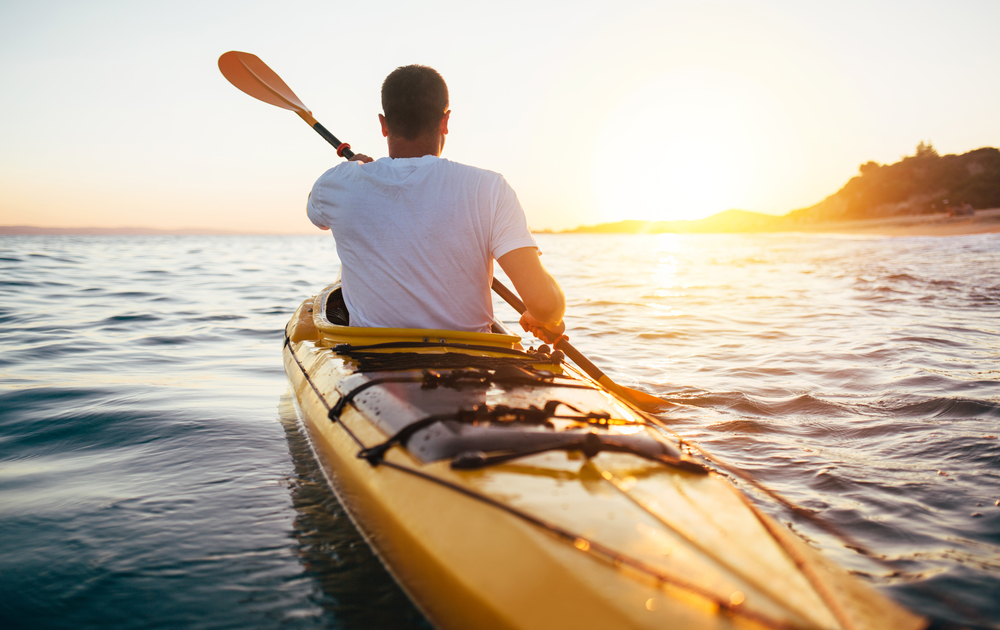
Follow These Tips When Kayaking Solo
While setting out alone on a still lake or sleepy ocean may seem like the ultimate serenity, it also poses its risks. With an average of 16 million people participating in kayaking recreationally each year and an estimated 250 kayaking accidents with an average of less than half of those resulting in death, it may seem like you do not need to worry.
Even so, accidents do happen, and the chances of those accidents resulting in severe injury or death are increased when you are alone. Even with a low incident rate, there are some safety tips for kayaking alone that you should follow to be on the safe side.
1. If You’re A Beginner, Don’t Go Alone

Even an experienced paddler should let someone know when they are kayaking alone. Tell a friend or family member what time you are leaving, the course you are taking, your destination, and when you expect to return so that if something does go wrong, they know where to find you. Don’t forget to let them know once you’ve made it back safely.
2. Pack the Essentials & Safety Gear
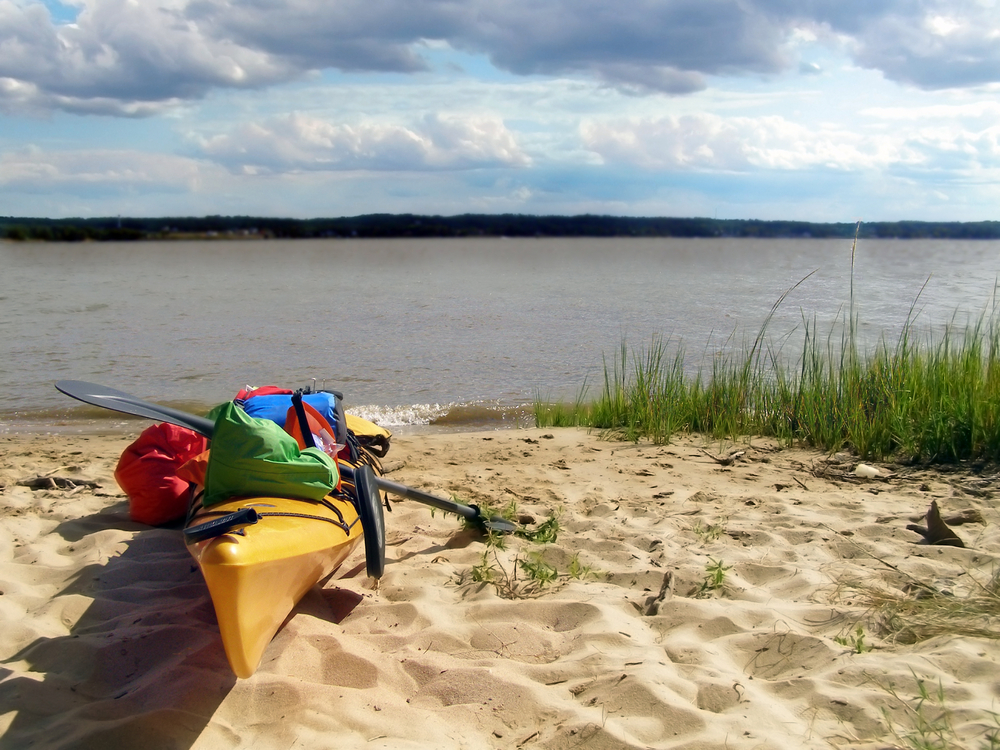
Ensuring you have the proper safety gear with you is a significant rule and not one that an experienced kayaker would forget. You want to be prepared for any scenario, so there are some items that every water buff should have on hand at all times, especially if you are paddling alone.
- The number one rule with all water sports and adventures is to wear a lifejacket that the Coast Guard approves. Don’t worry about feeling too restricted or that the lifejacket is too bulky; there are life jackets specifically for kayaks to help you paddle in comfort while staying safe. Life jacket safety is one of the tips for kayaking alone that you shouldn’t ignore.
- You’re also going to want to keep your cell phone in a waterproof case or bag so it doesn’t get wet, and you can use it in case of an emergency.
- Packing a waterproof flashlight and flares or whistles to use as a signaling device will also help in a worst-case scenario.
- Make sure you have plenty of water no matter the weather. Paddling is good exercise, and exertion is a given, so make sure you are well hydrated.
- In case you find yourself stranded and waiting, or even for a boost while you rest, consider packing an energy bar or something else that is easy to toss into a bag.
- Sunscreen and sunglasses will help protect your eyes and skin from prolonged sun exposure, so be sure to pack those along with you.
If you can, attach your supplies in a waterproof bag and keep them attached to the kayak so that if you do end up in the water, you won’t lose your supplies.
Always keep your safety gear at a reachable distance. Your equipment will be of no use if you are not able to get it.
3. Plan Your Route

When you’re kayaking alone, it isn’t the time to go off on a grand adventure into uncharted waters. Pick a location that you are familiar with, and that has a lot of land surrounding it if you need to swim to shore.
You also want to choose a location where launching into the water and coming back in isn’t going to be an issue. Opting for an area with proper docks or shore that is easy to navigate back onto will be optimal.
Especially when you are kayaking alone, it is good to know the body of water you are plunging into, the conditions during various weather, and whether your vessel is appropriate for this particular outing. Not all kayaks are built the same, so make sure that yours is suitable for your paddling adventure.
Calm lakes or locations with low boat traffic and lots of protection from waves are an excellent choice to venture out into alone.
4. Tell Someone Where You’ll Be

If, for whatever reason, you decide to go kayaking alone, make sure to tell several people exactly where you will be.
Unfortunately, several things could go wrong in the blink of an eye, which is why it is of the utmost importance that your loved ones know exactly what your location is so that rescue efforts can start as soon as possible.
If you choose to kayak alone, take precautions such as staying closer to shore and go out in calm waters on pleasant days.
5. Check the Weather
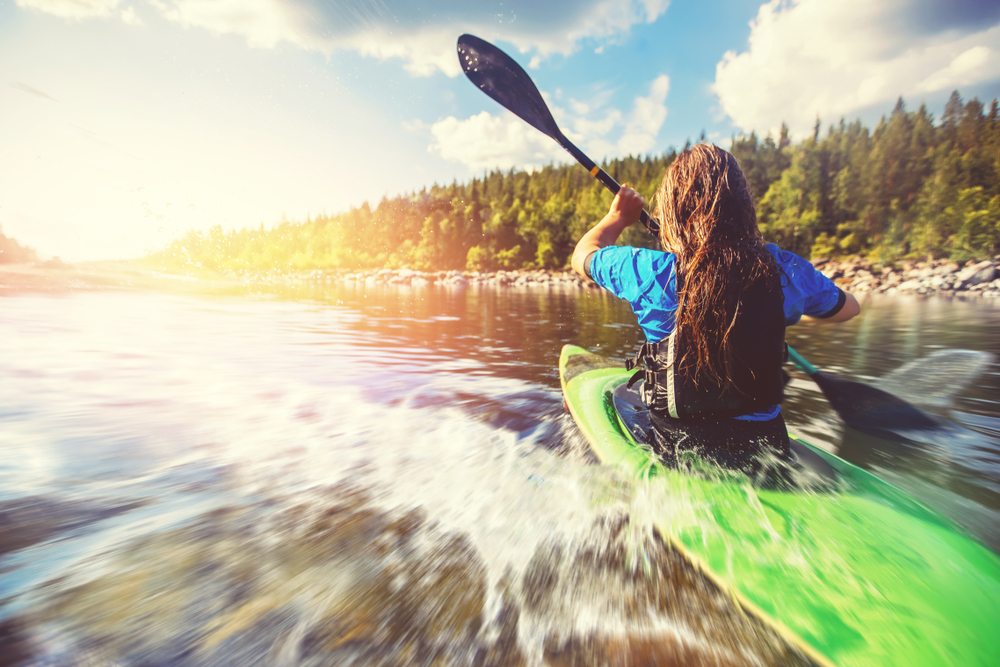
Whether you are new to kayaking or a seasoned pro, you always want to check the weather forecast before setting out on the water. Even if the weather looks favorable, it can change in a flash, and you don’t want to be caught in the middle of an unexpected storm.
Especially when kayaking alone, you want to ensure the weather is as calm as possible since it doesn’t take much for high waves and strong winds to overwhelm a kayak. Err on the side of caution and check your local forecast and the National Weather Service for detailed weather analysis.
There are other reasons for checking in on your local forecast before you head out on the water; it’s also about knowing what clothes to wear. If the weather is cold, consider that hyperthermia is real, and you need to prepare for the worst, as unpleasant as it sounds.
6. Dress Appropriately
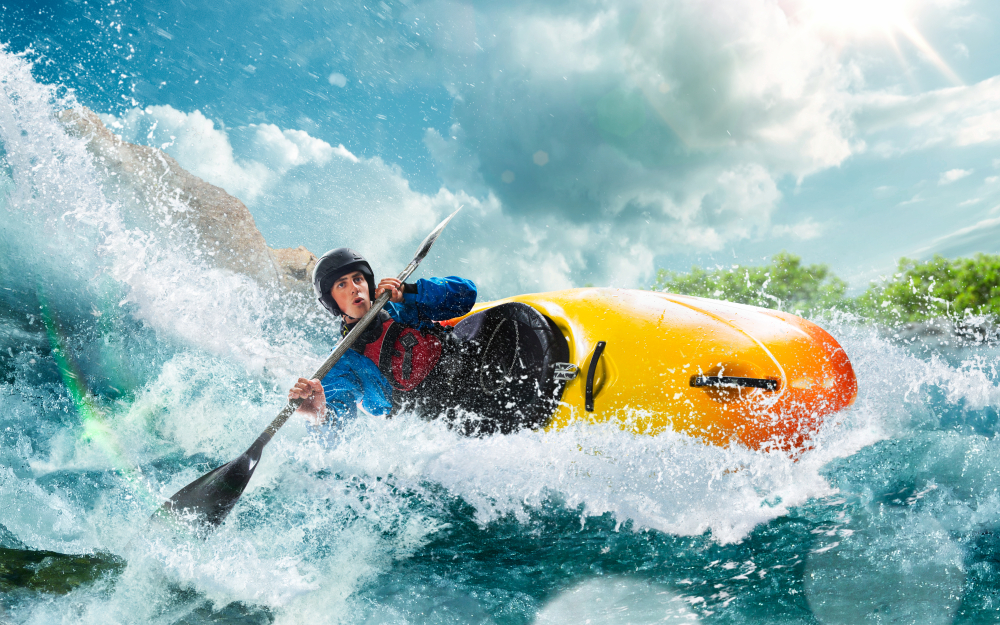
You will want to dress appropriately for the weather, as well as the temperature of the water. It may be a beautiful, sunny day, but if the water temperatures are low, you will want to make sure you are wearing a wetsuit to help prevent hypothermia if you fall into the water for a length of time.
It’s a great idea to dress in layers, as you may head out while it’s chilly, but it can warm up in the afternoon. This way you can peel off clothing as the temperature becomes uncomfortable and then layer back up if the temperature drops.
As far as footwear, you may want to invest in wetsuit booties, especially if you are out on the water often. They offer great protection and will dry quickly. You will also want to invest in breathable fabrics for jackets, pants, and shirts so that if your clothes do get wet, you will be able to air dry them in a relatively quick period of time.
7. Have an Emergency Plan
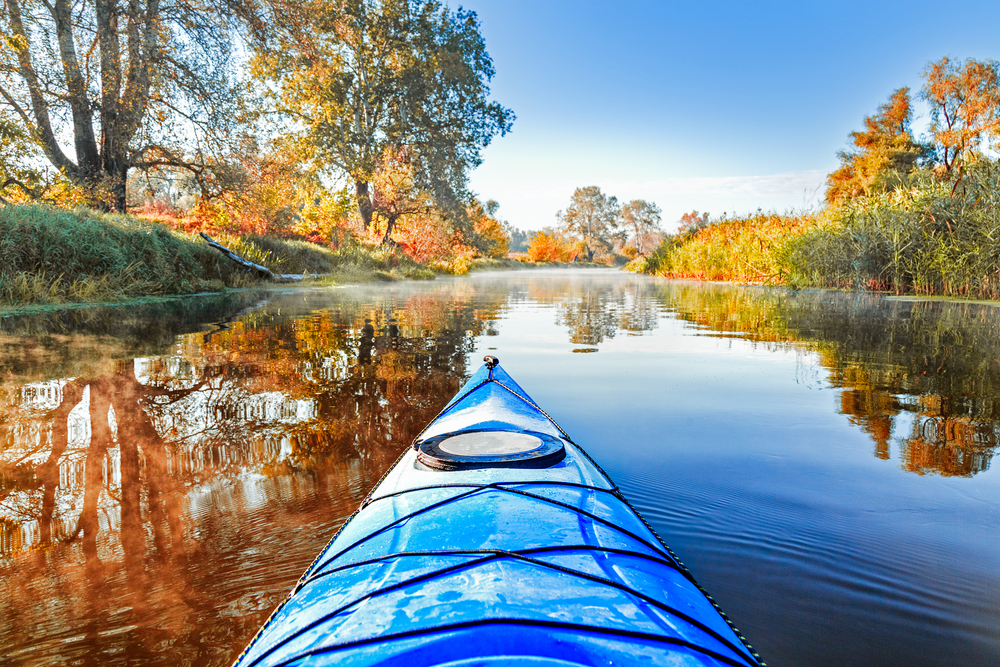
Whenever you are heading out on your own, whether it’s kayaking, biking, or jogging, you should be prepared and have a back-up or emergency plan. No matter how many times you have ventured out solo, or how comfortable you are on the water, an emergency plan is essential.
Let family or friends know where you are, the route you are taking, and when you plan to be back. If you are traveling, you can always let the hotel front desk know of your plans.
Keep your phone in a waterproof bag so that it will stay dry, even if your kayak capsizes, and in a secure and easy to reach location so that you can reach it easily while you are adventuring on the open water.
Final Word
Even a seasoned kayaker would do well to follow these safety tips for kayaking solo, just if the unthinkable happens. There is no reason to believe that your adventure on the water will be any less than peaceful, but tips for kayaking alone should be followed as a precaution.

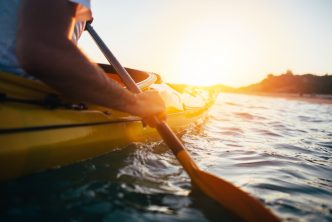
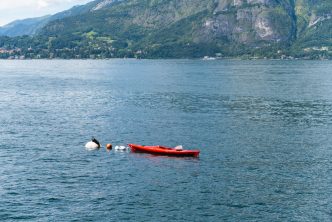


The first safety tip you mention is to wear a life Jacket…then go on to post the opening, lead photo of a paddler WITHOUT a life jacket on!